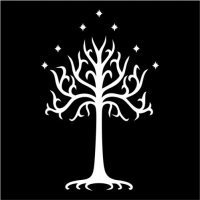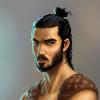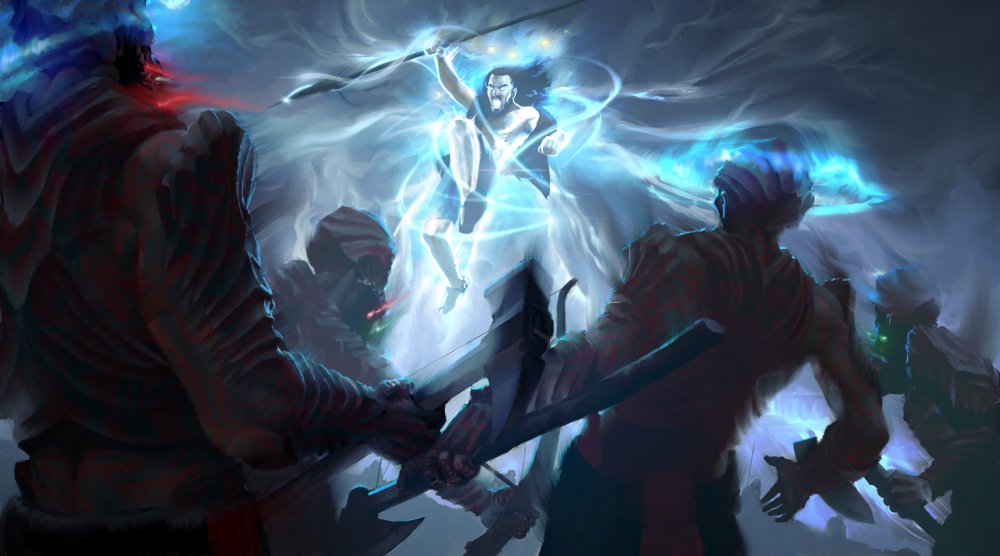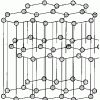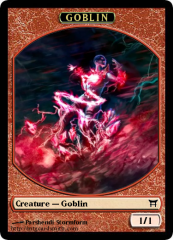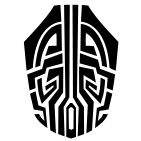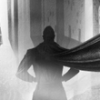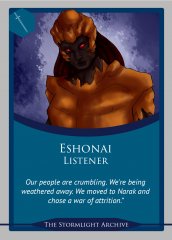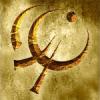Search the Community
Showing results for tags 'parshendi'.
-
I had this random idea while reading the theory about Wayne being a Kandra. We know very little about the Set's Faceless Immortals. They are presumed, by the characters on Scadrial, to be Kandra. This is presumably because the Scadrians know them to be shapeshifters, and the only shapeshifters they know about are Kandra. However. These Faceless Immortals have red eyes. What other shapeshifting species do we know of that has red eyes? The Parshendi. That is, the Voidspren-bonded Parshendi. "But they all have marbled black/white and red skin!" Yes. They do, that we've seen so far. BUT. "Smokeform for hiding and slipping between men." The obvious assumption for that is that they'd look like Parshmen, but that makes no sense. They've got Dullform for that, which is definitely NOT a form of power, and Dullform would be extremely conspicuous anywhere that wasn't used to Parshmen. So. My final theory: the Faceless Immortals with red eyes are Parshendi in Smokeform. If you've any evidence for or against it, please tell me.
- 18 replies
-
12
-
Just posted up a new gallery album with some Kaladin Fanart in it. I'm working on getting it up on my shop/website as well, but in the mean time: enjoy!
- 2 replies
-
12
-
- kaladin
- stormlight
-
(and 4 more)
Tagged with:
-
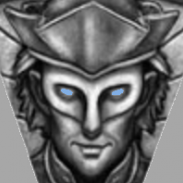
theory [OB] How to Stop a Fused & Make a Parshman
Wit Beyond Measure posted a topic in Stormlight Archive
I've been thinking for awhile about how the Parshendi have a Gemheart Bond with spren (using gemhearts inside of them to capture the spren) that is similar to the Nahel Bond of the Knights Radiant. More background on that theory is here: I've just barely started my reread and am struck by an idea for how the ancient Alethi (or others) might have created their Parshmen. I believe parshmen to be Parshendi without gemhearts to capture the spren that gives the Parshendi their abilities to change forms. Recently, I've realized that spren are released from the Gemheart (Parshendi) Bond as soon as the host dies, which is why we always see Mandras around dead chasmfiends and potentially why we see Timbre flying around Eshonai's body. This idea is strongly supported by the rebirth of the Fused whenever their host body dies. What if we amputate the gemheart from a living Fused? That would transform the Parshendi into parshmen and give the Alethi all of these gemhearts with the spren of the Fused still captured inside - just like the captured ancient spren that Gavilar is talking about in this quote and IMO just like the one in the sphere he gives to Eshonai. Gavilar just doesn't understand that it wasn't the Alethi who actually captured the spren but the Parshendi, with the Alethi only recovering the gemstone-captured spren from the living bodies of the Parshendi. -
Anyone name the process that was discovered at the time of the last desolation, or false desolation, that downgraded the Parshendi (listeners, last legion, non-human Voidbringers, insert name here) to Slaveform? Dulling (though would that be limited to just Dullform)? desprenning? Unmading? Unsplintering? Tweased?
-
Alright, so here is the 12th stanza Tis said it was warm in the land far away When Voidbringers entered our songs. We brought them home to stay And then those homes became their own, It happened gradually. And years ahead 'twil still be said '’tis how it has to be. So the first line refers to a land far away. What is this land? Is it another place on Roshar, or is it somewhere else in the Rosharian system? It was warm, so is it Braize Ashyn (thanks @Andy92)? The Voidbringers entered their songs at some point, so I guess the Voidspren came to the Parshendi while they were in the "land far away". I'm assuming that the homes they refer to are their bodies. Then, it says that "those homes became their own" which implies that gradually the Voidspren took over the bodies of the Parshendi. The last line says that it is necessary. Why is it necessary? Was this the best way between two bad choices, or was it something forced upon them?
-
Hey 17th Shard, My best friend shared with me an interesting theory that I wanted to run past you. He is not much for the forums but he did say he would be OK if I shared it here. I took his idea and built up a quick assumption list to help solidify his insight. Assumptions: 1. Bondsmiths can make and break Nahel, and other, bonds between a person and a spren. This assumption is not, necessarily, pivotal to the theory but perhaps the Bondsmiths are the ones who figured out what to do. 2. There is some sort of fundamental, underlying principles that dictate how these bonds are formed. Perhaps it is the innate system of the Rosharan system that makes the rule, perhaps Honor/Cultivation have a hand in it, perhaps it is a mix of those two, or perhaps it is something else altogether. Whatever the reason is, I do not think it is too big of a stretch to say that Brandon would create governing principles for the Rosharan magic systems. 3. The Knights Radiant of old (pre-Recreance) knew that Parshendi (or Parshmen) were Voidbringers. Or, since there is some debate about what a Voidbringer actually is, we might say that the Knights Radiant of old were aware that Parshendi/Parshmen were involved, somehow, with Desolations and Voidbringers. Theory: The Knights Radiant, knowing that Parshendi were related to the Desolations/Voidbringers (see assumption 3), discovered a way to break (see assumption 1) the underlying magical principle (see assumption 2) that allowed Parshendi to bond with Voidspren. In doing so, however, they also had to break their own bonds as well because the underlying principle applied to both their Nahel bond and the Parshendi bond. The Recreance was a direct result of the Knights Radiant deciding to give up their bonds because they thought it would forever prevent the Voidspren from bonding with the Parshendi again. We know that one Order of Radiants (possibly the Skybreakers) secretly kept their bonds which means that whatever a Bondsmith (see assumption 1) did to break the underlying principle (see assumption 2) was not completely successful - either due to the Order that secretly refused or perhaps because the Bondsmith just did something wrong. This mistake/accident/betrayal meant that some of the Parshendi remained Parshendi (Eshonai's people) and most turned into the Parshmen. This also means that the line in the Diagram about Taravangian possibly reusing the secret that broke the Radiants before could be referring to this. If the current Radiants were told that they could break all of the Voidspren's bonds with Parshendi by sacrificing their spren what would Kaladin, Shallan, and the others do? Could they justify to themselves not doing this? If they could save the world by sacrificing their spren... well, I think it would be hard for them to refuse. What say you Sharders? Is it possible that the Recreance was caused by the Knights Radiant delibrately trying to break the bonding process so that Parshendi could never again join with a Voidspren?
- 34 replies
-
17
-
- knights radiant
- bondsmith
-
(and 5 more)
Tagged with:
-
[ Spoilers from the first 30 chapters of Oathbringer currently released ] So with the "final Desolation" pretty much officially underway as of the end of WoR, the main question going through my mind has been: how the hell can Odium actually lose??? Think about it. We know from Dalinar's visions and various other lore elements that in the past each Desolation nearly wiped out humankind. In fact, the justification for the current level of technology (or lack thereof) is that civilization is basically pushed back to the bronze age with each Desolation because of how devestating they are. And now consider this: that was with the full, organized strength of the Knights Radiant. Literal armies of them. Plus the Heralds! Now we have the Final Desolation coming, and so far there's only a handful of fledgling Knights Radiant, none of whom even have their Shardplate yet. Not only that, but the existing nations are super divided, and at the start of Oathbringer it looks as though it will not be easy to unite even a small number of them. So how can Odium screw this up? How could this be even a close fight? It seems to me that the only possibility is that the Listeners (at least some of them) are going to fight with humans. This is being set-up already at the beginning of Oathbringer, where we see groups of former parshmen slaves, healed by the Everstorm, basically just on the run. Not trying to attack, not out to kill humans in vengeance even (though they have real cause to want revenge). Just trying to survive, and most importantly not yet infused with any type of Voidspren (at least not in any obvious way). We also know that the Listeners way back made a choice to cut themselves off from their gods (Odium and co), restricting their forms drastically but earning freedom. They assassinated Gavilar in an effort to stop their "gods" from returning. They don't want to be Voidbringers, and I can totally see at least some of them fighting to maintain their freedom, refusing to be used by Odium. This could be what is "different" about this Desolation, the edge that humanity needs to balance the scales just enough to have a hope of winning. It would also fit with the themes established throughout the Cosmere books (spoilers for Mistborn series coming). We know from The Hero of Ages that the Deepness was in fact the mists. But more than that, it was Preservation's power tainted by Ruin. Ruin caused the Snapping process to be more brutal than it needed, killing people instead of just awakening their powers, covering the land and blocking out the Sun when it wasn't meant to, etc... This was Preservation's actual power, but Ruin managed to influence it. This shows that the influence of the Shards is not always rigid and distinct. There is overlap and intermingling, where multiple Shards use the same basic phenomenon. That is what the Thrill has to be. Dalinar's first revealed vision, where he fights Midnight Essence, with a poker. The Knight explains that any who feel the desire to fight should be compelled to go to Aletha. The Thrill USED TO BE a force for good, a way of telling people that they were destined to fight evil alongside the Knights (either as a full member or as a "squire." Since then, it has been twisted by Odium into something that makes people lust for battle and death. And without actual monsters around, they turn on each other, or make a game out of war, or almost kill their own brother. Odium is doing the same thing that Ruin did. But maybe it can go both ways. I've seen others here comment that it is odd that the Everstorm seems to heal the parshmen, making them whole again by reforging their Connection (incidentally, because of how we know this works from the second Mistborn series, this explains why they all speak unaccented Alethi). This seems like a very un-Odium thing for the Everstorm to do, especially since they do not seem to be possessed by Voidspren yet. What if Cultivation pulled the same kind of trick? Twisting the Everstorm just enough that it healed parshmen without automatically dominating them, giving them at least a chance to resist, run, be free, what have you? We know from the Jasnath-Hoid dialogue that the Everstorm is "new" or at least working differently than how the Desolations worked in the past. Perhaps the reason is that this time there are forces other than Odium at work on it. There are even hints about this in the depiction of the Midnight Mother. During Shallan's interactions, it is revealed that she was created to sow chaos, but that over time she became curious. Yes, it is a twisted, warped curiosity. But consider her actions at Urithiru. Did she flood the tower with monsters? Did she set about assassinating actual targets? No, she just copied what humans were already doing. Does this seem particularly effective? Or does it seem like a lost, broken creature trying to comprehend these creatures through the only relationship she understands: violence? My point is just this: she has actually changed since her creation. Just like the Everstorm is different this time. Just like maybe the Listeners aren't behaving the way Odium might want this time around. A big theme so far is how the good guys, left to their own devices, become corrupt and fell. But I think Brandon is hinting that maybe, just maybe, the reverse is true for the villains. Odium is banking on how time changes humans, makes them forget why they fought and abandon what they once were. But wouldn't it be poetic if the same was also happening to his forces? The Unmade have changed, however slightly. The Listeners seem to have changed as well. And maybe this time around they will surprise him, make him think that he could actually lose...
- 4 replies
-
10
-
- oathbringer
- the thrill
- (and 6 more)
-
From the album: Highstorm MTG Deck
Second goblin token is a stormform parshendi. This one felt like the best flavor fit, although the art isn't as obvious as I'd like. Turns out there aren't that many fan art images of parshendi. -
This is a theoretical model I've thought up to help visualize what's happened to the listeners. This is all theoretical and highly metaphorical, but I think it helps explain things. The way Parshendi attune the rhythms has always reminded me of radio. They change rhythms the way a car radio changes stations. What if we assume that the underlying mechanism is analogous? A radio uses a metallic antenna, which receives incoming electromagnetic waves. We know the Listeners are closer to the cognitive realm, and they seem to hear the rhythms in their minds, so let's assume the rhythms are “cognitive waves,” emitted by an unknown source somewhere in Shadesmar. So the listeners receive these waves using cognitive antennae. Imagine every listener has an antenna sticking straight up from the top of their head. But it's an invisible mental antenna, a protrusion of the mind, existing only on the cognitive plane. Now imagine a shardbearer riding across Shadesmar, holding a shardblade out horizontally. He would slice off the antenna of every listener he passes. And since shardblades slice the soul, these antennae will never grow back. The victims will be permanently unable to receive the rhythms, which apparently also prevents them bonding spren and changing forms. And since this change is on the sDNA level, it becomes hereditary. Now imagine a shardblade the size of Roshar, sweeping across the entire continent and antennectomizing the entire listener race. This seems to roughly describe what someone (Melishi?) did all those years ago. The Parshendi, Eshonai's ancestors, escaped this fate by (the equivalent of) chopping off their own antennae with a butcher knife. They chose dullform, a faulty form with a stumpy, barely functional cognitive antenna. It leaves them almost as crippled as the rest of their species, but the damage is (cognitively speaking) only skin deep. Their cognitive antennae are too short for the megablade to slice, so their spiritwebs are undamaged. They retain the innate ability grow an antenna, attune the rhythms, and change forms. It just took them a while to figure out how. The Everstorm has now invested the Parshmen of the world with stormlight (or voidlight), allowing them to regrow their cognitive antennae the same way Lopen is regrowing his arm. Their souls and minds are whole again. Stormform, and presumably other voidforms, hear 'new rhythms,' unknown before their transformation. This implies that these voidforms have a different kind of antenna, which receives different wavelengths. The new rhythms and the old rhythms might be emanating from two different sources, perhaps one Cultivation-related and the other Odium-related. My guess: the sources are perpendicularities. Listeners are attuned to one of them just like Vin was attuned to the Well of Ascension. (Burning bronze approximates the function of a cognitive antenna.) Thoughts?
-
Now that we’ve met post-Everstorm parshmen, it may be time to rethink our assumptions about the Listeners. I apologize if this has been discussed to death in a different way, but I wasn’t able to find anything challenging the idea that the term “Last Legion” was anything but positive. It has seemed natural to assume that the Listeners (Parshendi is a nationality) are the correct or proper type of Parsh-Rosharan. They are represented by relatable, well-meaning characters and have a fascinating oral tradition that tells of a daring escape from Odium’s influence. We contrasted them with the enslaved parshmen whom they pitied for not having forms or hearing rhythms. Now we have a second group traveling with Kaladin who, despite not having multiple forms or attuning to the rhythms, are just as relatable and intelligent as the Listeners. Is one group more “natural” or “better” than the other? What got me thinking about this is the title of the interlude that introduces us to Venli’s research and stormspren, “Last Legion.” It’s also the chapter where Eshonai’s mother describes the Listeners as the “Last Legion,” and we hear the story of how they escaped: I think this is problematic in a series about the loss of knowledge and how it seems to have led humans to forget critical pieces of their history and set Odium’s plans in motion. Why not the Listeners, too? Eshonai even thinks: It’s possible that others have noticed that this history is a bit troubling, but now, especially after seeing the group traveling with Kaladin, there are red flags all over the place. The Listeners believe that they are a self-sacrificing Last Legion, but given that this is also the interlude where we see the Listeners move toward bonding with stormspren, we should consider the possibility that the Listeners are actually Odium’s last legion (lower case). Much like humans have been manipulated over millennia, is it possible that Odium ensured that there was one last legion remaining when the future parshmen had their spiritwebs damaged? It would actually be easier for him to manipulate the Listeners, to trick them into believing that they had escaped, leaving just enough mysterious information for them to figure out how to discover forms that brought them progressively closer to summoning the Everstorm. I’ve also grown increasingly suspicious of the rhythms, or at least the potential to “piggyback” on the signal and transmit information that helps Odium: I’m wondering if the group with Kaladin would need to attune to the rhythms they are aware of—but don’t understand—before they could transform, even in the coming highstorm. At any rate, I don’t think that we can be sure what these Parsh-Rosharans should look like, if they should have multiple forms, or what their relationship to the rhythms should be. Would the healed parshmen eventually die without a spren bond? Are they fine the way they are? I do think we should consider the possibility that the Parshendi (and any other Listeners) were Odium’s unwitting last legion.
-
So this deserves a separate thread. Some of the old spren used to have 4 genders because people didn't imagine them. Parshendi have 4 genders. Male, malen, female, femalen. That was cool. And significant. And oh bother... the spren had 4 genders originally because the Parshendi were the first ones responsible for directing their identity!
-
Before reading this theory, I recommend you read this one, as my theory is strongly based off it. The gist that theory it is that there is something wrong with Roshar's afterlife, and souls are unable to go to the Beyond, and instead stay in the Cognitive Realm. Anyways, here's my idea. What we know 1) Stone is important in the Shin religion. Shin will not break it, step on it, or mar it in any way. 2) When Parshmen die, other Parshmen "wrap them in linin and carry them out into the wilderness and leave them on slabs of stone". This is one of the only sapient actions they are seen doing. 3) Talenel is the Herald of war, and his essence is stone. 4) Living things are represented by flames when alive, and become like ordinary objects when dead. What I think When a sapient being dies on Roshar, their physical aspect becomes their corpse, and their cognitive and spiritual aspects go into stone. The Shin feel that breaking stone would harm the dead people, and the Parshmen want their dead to be near stone so they can move easily to it. Talanel probably isn't leading the current fight to reclaim the Tranquline Halls or their equivalent at the moment, but if he had been in the past, stone is his element and he would probably have an easy time accessing souls who are in stone. When Shallan went into Shadesmar, she was unable to tell the difference between something that had never been alive and something dead. If stone contained the cognitive and spiritual aspects of the dead, it wouldn't be bright or anything like that. Ideas?
- 5 replies
-
1
-
- cognitive realm
- shin
-
(and 1 more)
Tagged with:
-
This post brings in some of my thoughts on Oathbringer, Voidbringers, and Voidbinding but also builds on a lot of the ideas I've read on this site. I’ve been speculating about the title of the book, Oathbringer, (and its likely in-world literary counterpart and Dalinar’s old sword) in light of the idea that “void” refers to the breaking of oaths, bonds, and contracts. If this is the case, “Oathbringer” serves as a very clear opposite to Voidbringer in a more substantial way. We know that this book will be about Bondsmiths, but I suspect that it is also necessary to lay the groundwork for the final two books of the first five. The idea that Roshar is bond-focused, rather than spren-focused (borrowing from others here!), makes a lot of sense when thinking about the tactics and strategies of the parties involved. There are those who create protective, consensual bonds and oaths to protect Roshar, and those who void oaths and (likely) form twisted, nonconsensual bonds. Spren are willing, and perhaps unwilling, partners in forming these bonds, too. In addition to learning more about the significance of bonds and oaths and the role of Voidbringers and Voidbinding, I think the consensual nature of bonds and oaths will come into play. We know that it’s possible for Listeners to voluntarily give up forms, so the bondage of the Parshmen is even more terrible. If humans used something on the void-side of things to deprive the Parshmen of forms, that would demonstrate a corruption of the honor-based system of bonds, as humans showed a willingness to use voidlike tactics. I’m also thinking about the bondage of spren. Nahel spren, as far as we know, choose to bond, sometimes even against the wishes of other spren in the Cognitive Realm. But we’ll likely be seeing more about the consequences of bondage, perhaps especially with regard to spren trapped in gemstones against their will or against nature. From WoR, it seems that the Parshendi may have started down a dangerous path when they learned how to trap spren, rather than attract them: And who knows what the dark side of fabrial science might be? We might find out more in this book, though. At any rate, I think that Oathbringer will help set up the opposition between forming a bond and voiding or twisting a bond, while also exploring the nature of bonds made freely and bonds that more closely resemble bondage. This will establish more specific stakes for the last two books. I’m interested to see where others think this possible focus for the book might lead! P.S. Sorry if I got carried away with hiding spoilers on a spoiler board!
-
8
-
- oathbringer
- bonds
-
(and 3 more)
Tagged with:
-
Hi everyone! Just wanted to share my most recent fan-composition: "Eshonai's Lament." I have been wanting to write this for a long time and I'm so glad to have it on my channel! She's such a great character, I hope I did her justice. DISCLAIMER - In case you miss the video description, I would like to make a note that the lyrics are NOT real words. I just made up what sounded cool and fit the style I was going for. SO, if it sounds similar to any REAL language, that is completely happenstance; I mean no offense. Please check it out and let me know what you think - either here (upvote or comment) or on YouTube. Thanks! Hope you enjoy it!!!
-
So, I've seen a lot of theories here about Eshonai becoming a KR, and it got me thinking if that's even possible. On my most recent reread of WoR, I saw that Syl tells Kaladin that Parshendi can't become surgebinders (chapter 44). So how do all you theorists explain this part? I would normally think that surgebinding is pretty important to be a KR. Could She perhaps be wrong about this/misleading Kaladin?
-
Do parshmen/Parshendi need to be outside in the storm to transform into voidbringers, or would it reach them even if they were in an (intact) indoor structure? I can't help but think that in Edgedancer, when might have been just the worse possible thing they could have done. And then there's poor Rlain. I think Urithiru* is above the regular highstorm, so maybe the Everstorm can't get there either- but that would still mean he'd have to stay in Urithiru almost full time to avoid turning into a monster. But if he can just stay indoors, and people figure out how to build backwards laits, then he could just make sure to hunker inside whenever it comes. *(And am I the only one who keeps mentally pronouncing "Urithiru" as "Urethra"?)
-
In WoR Rlain states that whilst posing as a parshman he was in dull form, does anyone know what form he was in when he came to help Kaladin?
-
So, I haven't found this question discussed anywhere on the site. Last we heard from Eshonai she was pushed down a chasm by Adolin at the final confrontation with the Parshendi in the WoR. Here is the extract from the book: "His shove threw her over the plateau's edge. He felt Eshonai's panic, heard her shout, as she was dropped into the open blackness" (pp. 1011). Given the storms raging/ building, at the time, we can expect that the chasms wasn't and wouldn't be very hospitable place to be for the coming hours, and given that Shardplates behave like other armor in water, it probably won't be particularly useful in saving her life. So, going on that I am assuming she is dead. But, I have three small questions that make me ask whether she might somehow be alive after all. 1. We know that Esonai, based on postings from other people here, that she will have the flashbacks in book 4 (I think), and while Mr. S has said that (also based on postings from other people here) that the person didn't need to be alive to have flashbacks, might this be a factor making it more likely that she survived? 2. And, related, there has been some suggestions on the forum that the the 10 flashback persons are related to the 10 orders of KR, although Mr. S apparently has considered giving someone two flashback books, e.g. Kaladin, which would suggest that there is no relationship between the 10 books and the 10 orders of KR. However, if there indeed is a link between them, that would mean that Eshonai somehow has to be become a KR, which would require her to still be alive (okay, this wasn't really a question at all). 3. In the ending of the WoR, there is no mention, as far as I can remember, of Eshonai, or speculations of what has happened to her. Given the value of shard plates/swords, said to be worth more than a kingdom, isn't it strange that people weren't running to the chasms to find and claim them? Or, do you guys reckon that this is all being taken care of in the background with Mr. S not wanting to use space in the ending of the book for such trivial matters? So, basically, what I am saying is that she is not mentioned after falling down the chasm, combined with the fact that she has a flashback chapter, and that I am uncertain about how useful a shard plate and sword might be for falling into and getting out of/ surviving in a chasm during a storm while in stormform. What do you guys think, is it pure nonsense from my part, or might she still be alive, somehow?
- 48 replies
-
3
-
- words of radiance
- parshendi
-
(and 2 more)
Tagged with:
-
From the album: crab land
Here she is, the important crab lady I love Eshonai -
From the album: crab land
here are some more crab ladies. I still love Eshonai so much -
I was rereading WoR and thinking about why (and how) the knights radient betrayed their spren. The best idea I had about it was that they did something to make all spren leave their hosts. This would definitely count as a betrayal by a spren. And the reason that they would do this is to stop the Parshendi once and for all. They are tired of fighting the Parshendi again and again, and by giving up all their spren, the parshendi are trapped in Dullform. By losing their powers and responsibilities, they rid humanity of its largest threat and get cool servants! Everyone wins! (Except the spren.) Thoughts? Ideas? Feedback?
- 89 replies
-
6
-
- knights radient
- spren
-
(and 2 more)
Tagged with:
-
Please tell me if this idea has been proposed before. WoB's: These three say to me that the Listeners have Odium-related forms and Cultivation-related forms. They have no Honor-related forms. Their other, less magical forms, like artform, dullform, workform, nimbleform, etc. probably predate shardic influence on the planet. They obviously couldn't survive on their own in slaveform. -Song of Secrets Stanza 17 So, Nightform basically predicts the future, something that Cultivation is said to be good at. Also, it whispers "As the gods did leave". If the gods are the unmade, it wouldn't make sense for nightform to give a new prophecy as Odium's influence is retreating. -Song of Secrets Final Stanza I'm assuming that the nightforms refers to the a group of Listeners in nightform. I originally thought that that meant that there were multiple nightforms, but this interpretation makes more sense to me. We know that Honor thinks that a champion might work against Odium because all the Shards are bound by rules. The last line probalby refers to this event, so I think that the future predictions are probably accurate, as Cultivations woud probably be. There's also the "but" inbetween when the song talks about the Unmade and the nightforms. To me, this suggests a contrast between nightform and the Unmade-influenced form And we have the similarity between "nightform" and "Nightwatcher" going for this theory. Most of the lines about the other forms of power speak about the danger of them. Examples: I copied these straight from coppermind so there is still that large blue box there. Sorry. The songs never mention the dangers of Nightform. It's odd. It occured to me that one of the objections to this theory might be the Vorin prohibiotions on predicting the future. But if Cultivation, Honor's girlfriend/wife is good at it, why would Honor's religion object to it? I think that this was probably caused by the Hierocracy, which I personally believe was influenced/caused by Odium. It seems to me like there are a lot of small hints that add up to a pretty clear conclusion. Maybe I'm missing something though. Thoughts?
-
From the album: Stormlight Trading Cards
-
3
-
- stormlight
- eshonai
-
(and 1 more)
Tagged with:
-
In the first Eshonai interlude in WoR, we get this line: Have we ever had any confirmation on whether exposure to Stormlight directly encourages growth, or whether the Parshendi are using a growth fabrial? If it's the former, it might relate to stormwater being better for plants than regular water. Some sort of response to the Investiture.
- 12 replies
-
- words of radiance
- stormlight
-
(and 2 more)
Tagged with:
-
Life before death. Strength before weakness. Journey before destination. The Knights Radiant adhere to the philosophy that the ends do not and never will justify the means. Unlike Taravangian who is committing atrocities in the name of "The Greater Good" the KnightsRadiant are forced to work the hard way by living by ideals and honorably. But the Radiants en masse (except perhaps the Skybreakers) broke their oaths on the same day. This was after the Desolations had ended and resulted in the Nahel bonds failing and the Spren abandoning mankind. We know that a war was going on right before the Recreance and that the Radiants were fighting in the war and after they abandoned their blades and plates and left from what we see in Dalinar's vision in WoK (At least the Windrunners and theStonewards). What is something that would break the oaths of all of the knights at once, something that the Knights could be convinced was worth doing that would be dishonorable, that was for the Greater Good, that took the easy path. An unethical action that all the knights would do. I see two possibilities and they're related. There are two events that have happened in the past that require great power and would seem to break the Knights first ideal. One is the shattering of the shattered plains. The other is the enslaving of the Listeners. I don't think it is a conincidence that the last free listeners live on the edge of the kingdom that was shattered by someone. I think Natanatan may have been figthing a war with the Listeners before the Listeners of Narak fled and abandoned civilzation, culture, and the forms and retreated into the wilderness in Dull Form. I think the Radiants were called in to stop the war of join the war and were somehow convinced that the Listeners would bring on another Desolation. I think the Radiants may have been convinced to make a preemptive strike to avoid the Desolation that may or may not be coming and destroy the Listeners entirely before they could summon a Desolation. So they shattered the Area around Stormseat by working together somehow and enslaved all the other Listeners. This stopped the threat, but was such an abhorent, deplorable, dishonorable act, such an egregious breach of the first Ideal that the Radiants agreed to do that it broke all their oaths beyond repair. I haven't put all the pieces together and I don't think we know enough. This is just a hypothesis. I think what broke the oaths was the result of either the breaking of Stormseat to stop the Listeners, or the enslavement of the Parshmen.
- 25 replies
-
4
-
- recreance
- knights radiant
-
(and 3 more)
Tagged with:

